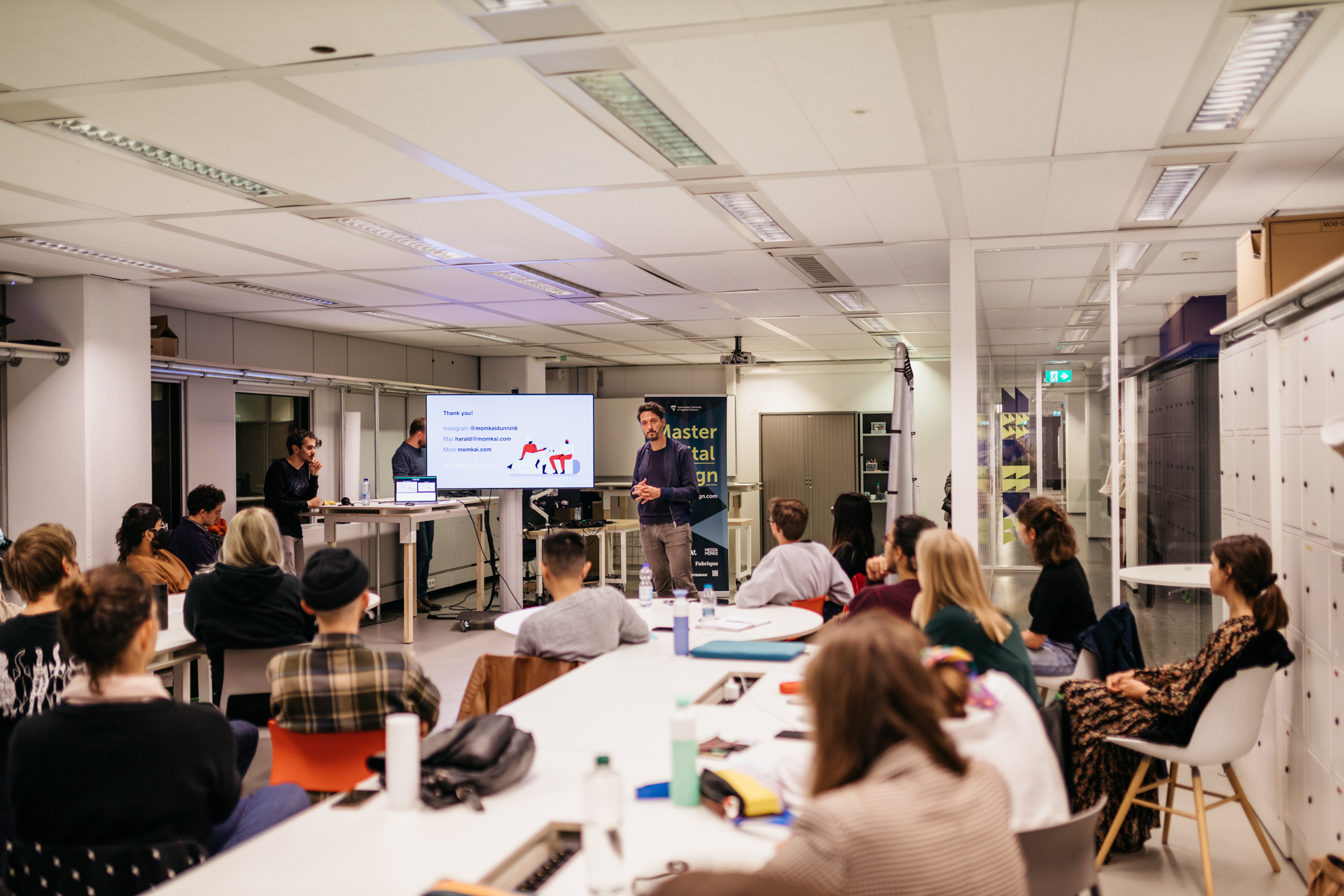Teaching Under Covid: How a Hybrid Approach Kept Us Going

As a practical education, the idea of moving our teaching environment fully online daunted us. We may be a programme on digital design but part of what we do needs and involves the physical world. Above all, it requires interaction in the same room: we’re not designing for machines, we’re designing for humans – social beings by nature.
Before the pandemic hit, we were welcoming 24 students to our studio. We have always prided ourselves of the close and rather informal contact lecturers, staff, and students have with each other. Chit-chats next to the coffee machine, a quick exchange of ideas in the lab, a spontaneous brainstorming in the lounge are routine for us. It’s also a one-year full-time master of science with a quite demanding practical component. So, it’s an intensive year where the master’s programme easily becomes our main social point of contact.
We are also strong in peer-to-peer education. But for this to happen, students need to socialize, get to know each other, and understand how they can help colleagues and find support for their own projects. A fully online education does not allow this to happen. However, our staff and students’ health and safety have always been a priority and in-person education in times of Covid-19 did present its dangers.
Teaching Design in Hybrid Form
The first lockdown in March 2020 forced us to leave the premises and go into a fully online learning environment. The students of that year spent the rest of their studies working from home. Most saw each other only in July at their social-distanced graduation ceremony.
What we learned from that experience is the evidence to something we already believed in: design is much better when it happens in person.

Next to understanding how to teach under Covid-rules, this current academic year also presented another challenge: we were doubling the number of students to 48. Despite the extra studio space we acquired, it was still impossible to guarantee a safe distance from everyone. Especially when it came to group work. The solution: a hybrid form of education, bringing digital and the physical world together – very much like what we praise at our studies.
In order to allow students to benefit as much from our facilities, we divided the class in groups and came up with a roster displaying on which days of the week they were welcome in the programme’s premises. Those who weren’t scheduled for studio time, could follow the lectures online or work elsewhere in the faculty.
Every day, we welcomed half of the class who could sit across two studios, guaranteeing social distancing. Masks were at hand whenever working in groups or needing to talk at a closer distance.
This system allows everyone to benefit from using the facilities, and from contact with lecturers, staff, and students. It does mean, though, half of the students never really see each other.

There are also downsides and challenges to this hybrid form of education. It demands more effort from lecturers that they don’t ‘forget’ about the students following online. Class assignments must keep the two forms (physical and digital) in mind. Group work for those online is more challenging. And following a lecture online is just not as engaging as when you’re present in the room.
But what this system brings is some sort of contact. Lecturers do get a chance to check on students up close and personal and in more informal manners. Students can talk to each other and easily form synergies that support their studies and projects. And, above all, it offers a bare minimum normality in our social lives as we battle through lockdowns and quarantines.
Hybrid in Lockdown
Our initial form of hybrid education suffered a hiccup when the Dutch government announced a new lockdown at the end of 2020. No more lectures were allowed in the premises and all students had to continue their studies from home. But moving to an exclusive online environment compromises the learning goals of the programme and fails our students.
Given the nature of our programme, we have been given a special status of practical education, which allows us to continue our hybrid-approach but in a more limited manner. While lectures are online, up to 16 students can work daily from our studio and lab, allowing them to complete activities that they can’t do it from home – such as access to certain software and hardware, like our VR equipment. It has been up to them to self-organize the schedule.
For those who can’t access the premises, we have a system in place allowing them to borrow materials from the Lab or easily ordering what they may need to continue working on their projects.

The Future of Design Learning
It’s unclear what the next academic year will bring and how the virus will develop. For 2021-2022 we are betting on continuing with a hybrid form of education. We are hopeful that, as we win the battle against the virus, certain rules will be relaxed and that more social interaction can take place at our premises. We are also moving to a new location on campus and we definitely want to explore those as much as we can.
In sum, what does our hybrid education mean?
- Part of the education is followed online; but we strive for as much time in the studio and lab as possible;
- We divide the class into groups. Groups that can be physically present at the studios alternate daily. The rest follows lectures online.
- Groups that are not scheduled to be in the studio/lab on a specific day can still meet personally and work from other locations on campus.
- Lecturers teach from the studio when needed or from home

